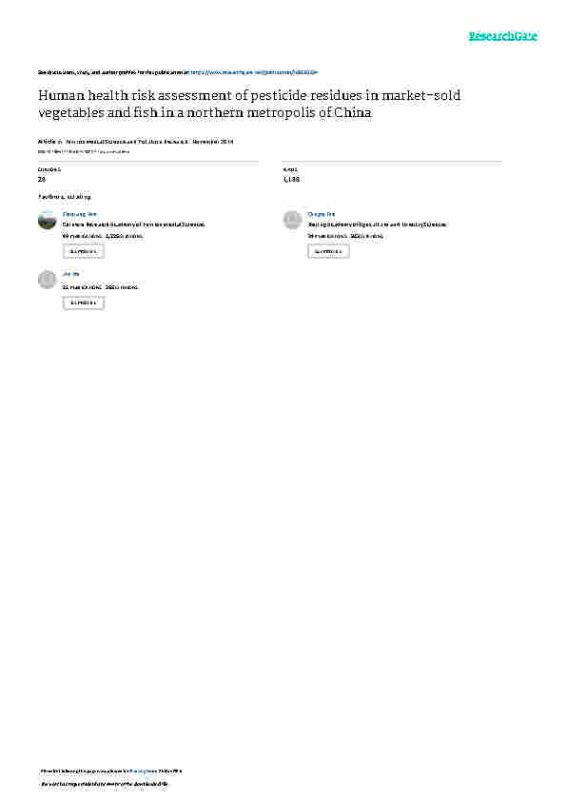Article Human health risk assessment of pesticides residues in market – sold vegetable and fish in northern metropolis china
26/08/2024
DOCUMENT DESCRIPTION
In recent years, because of increasing concern about food safety and public awareness of pesticide residues in food, research in China has focused on investigating pesticide residues in foodstuffs. Organochlorine pesticides (OCPs) are persistent and highly stable in the environment (Salem et al., 2009). Hexachlorocyclohexane (HCH), dichlorodiphenyl trichloroethane (DDT), and endosulfan are three OCPs that are widely used in agriculture (Tao et al., 2009).
China began to produce and use HCHs and DDTs in 1950, and their production was not banned until 1983. Over the 30 years of production of these pesticides in China, 0.4 million tons of HCHs and 4.9 million tons of DDTs were produced, accounting for 20% and 33% of the world production, respectively (Hua and Shan, 1996; Zhang et al., 2009).
DDTs and HCHs are frequently detected as predominant OCP pollutants in the environment (Feng et al., 2011; Zhang et al., 2013). Endosulfan is still in production and used in China, and in 2008, 5,177 tons were produced in China (China, 2010; Wang et al., 2007).
Residues of HCH and DDT are frequently detected in vegetables, fruits, fish, trees, wheat, and milk (Darko and Acquaah, 2008; Gebremichael et al., 2013; Guler et al., 2010; Liu et al., 2010; Marco and Kishimba, 2006; Mishra and Sharma, 2011). Because endosulfan is extremely toxic to fish and aquatic invertebrates, its accumulation in vegetables and fish has caused public concern (Li et al., 2009). Many studies have investigated OCPs like HCH and DDT in vegetables and fish from different regions and cities. However, these studies


